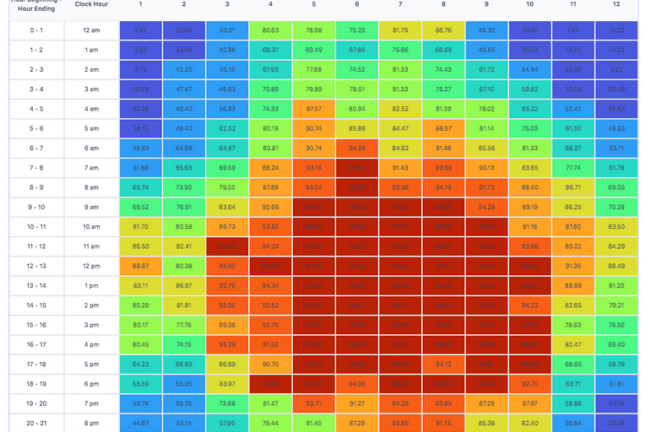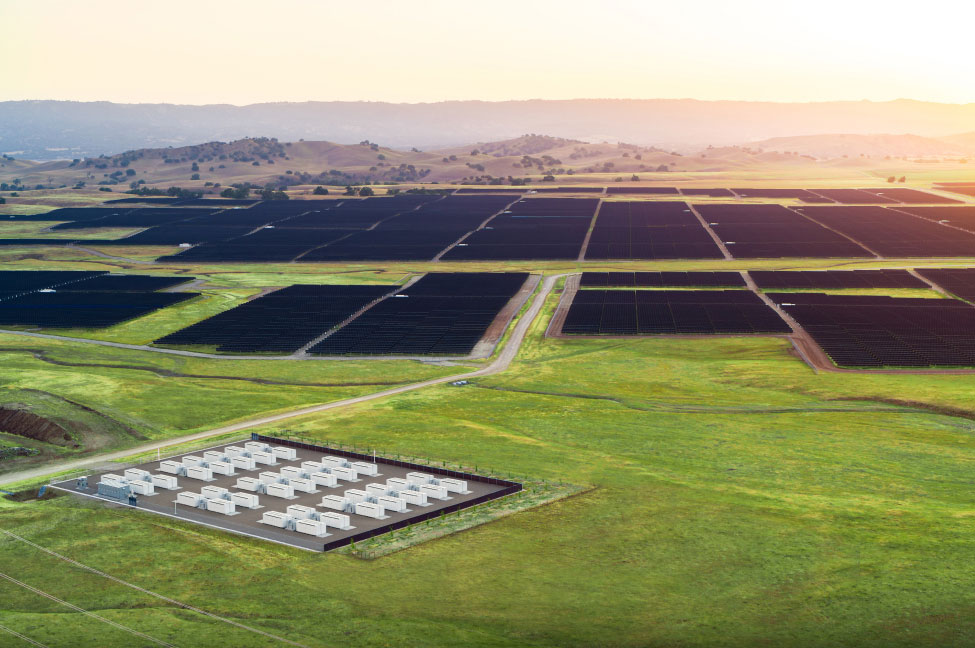Overview
One of the big winners of the Inflation Reduction Act is the hydrogen industry. Under the new legislation, green hydrogen (or hydrogen produced from clean energy sources) is eligible for a $3/kg production tax credit. This tax credit is expected to make green hydrogen production competitive with gray hydrogen (or hydrogen produced from natural gas).
For renewable developers, supplying energy for hydrogen production presents a major new offtake opportunity. In this blog post, we explore how renewable developers can leverage Tyba’s modeling software to design clean energy systems that supply hydrogen production facilities.
Case Study:
Designing clean energy systems for green hydrogen production
Opportunity overview
An industrial company is exploring whether to add green hydrogen production (electrolyzer + on site clean energy) to their existing facilities in central New York, North Carolina, and east Texas. Each facility has space to site solar and batteries behind the utility meter. The operator has shared that they need to hit a minimum of 55% load factor (or 5.5 MW of power injected) per hour on the electrolyzer over the course of the year to meet their hydrogen demand. They are soliciting bids from renewable developers to design renewable systems that meet their production requirements but at the lowest cost possible.
Model energy production for range of options
Setup & run the models
Based on the details provided, we are going to model a range of solar only and hybrid solar + storage designs that toggle across the following options for each site.
- Solar array capacity (ranging from 10 MWdc to 40 MWdc)
- Storage capacity (none to 30 MWdc)
- Storage duration (4, 6, and 8 hour options)

Review the results
How far can solar get us?
Now that we’ve run the simulations, we want to first see how far a solar-only design can get us.

As expected, even with a significantly oversized solar facility, we are well below the 55% target. Likewise, there are significantly diminishing returns on incremental solar capacity as you move above to the 15-20 MWdc.
Can a hybrid solar + storage design hit the 55% target?
Now that we’ve established that a solar-only design cannot hit the 55% target, let’s see if hybrid solar + storage designs can. The tables below detail the load factor across different solar capacity and storage capacity + duration options for each site. Some quick takeaways are:
- There are solar + storage designs that can meet the operating requirements of the facility across each market.
- For the North Carolina and Texas , this can be achieved with 30 MWdc / 20 MW storage design options. For New York, this would require further upsizing to a 40 MWdc / 30 MW storage design option.
- Across each location, you have to massively oversize the hybrid system relative to the 10 MW max load of the elctrolyzer.
New York

North Carolina

Texas

For those more visually inclined, you can also review performance with 12 x 24 graphics:

…or switch to a heatmap view:

Develop your bid
For the range of design options that meet the qualification criteria, you can now run through your financing model and propose a blended PPA rate.
From the facility operator’s perspective, they will want to compare this blended PPA rate vs. their current utility rate as well as the overall impact on facility load. In Tyba’s software, you can model site load pre- and post- installation of the system, and show economic value beyond just meeting the operating requirements.
Areas to further explore
- Integrate other renewable generation sources – At current electrolyzer CapEx levels and hydrogen prices, it is unlikely that a renewable source (e.g. solar or wind) can consistently deliver sufficient energy to meet operating requirements. Likewise, as seen with the examples above, even in the sun belt, you would need to massively oversize solar and pair that with high capacity & duration storage to achieve 55-70%+ load factors. Instead, it may make sense to pair multiple generation resources (solar, wind, and/or hydro) with storage to most reliably and cost effectively meet energy supply requirements. Tyba’s flexible modeling software makes it easy for you to combine multiple generation resources (solar, wind, and hydro) and pair that with storage.
- Identifying other monetization opportunities – While the projects are sited behind the meter and focused on delivering energy to the electrolyzer, there may be opportunities to monetize the energy and/or capacity from the hybrid system. This could include exporting energy, enrolling in demand response, and providing ancillary services. Tyba’s software allows for optimization across these varying opportunities while also meeting the energy delivery requirements.
- Other applications – A similar modeling approach can be leveraged to design firm delivery (16 x 7, 12 x 24, etc.) products, bitcoin mining operations, and other new/emerging offtake opportunities that require complex system designs.



